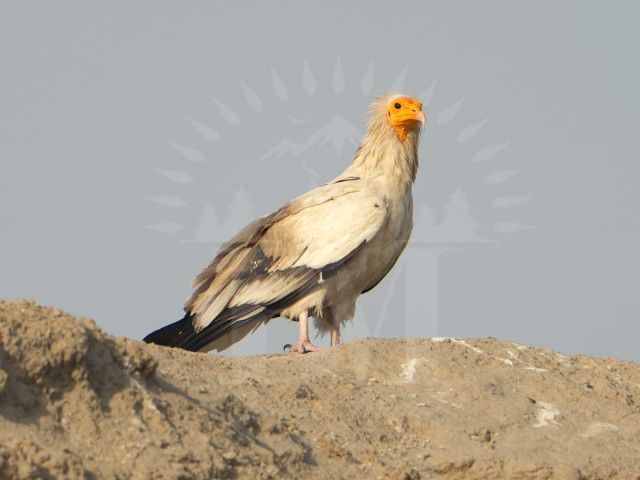Lacking resources: Rare vulture species escaped identification for years
Paucity of funds prevented govt bodies from discovering the endangered birds

Despite conservation efforts for rare species gaining momentum in the country, wildlife teams in South Punjab failed to detect the presence of a rare, nearly extinct vulture species for years.
Recently, a group of wildlife documentarians, spotted a colony of rare Egyptian and Russian griffon vultures, previously believed to have been extinct, in the desert city of Yazman, of Bahawalpur District, while filming a documentary on the wildlife of the desert area.
“We were enthralled to catch sight of these rare vulture species sitting on trees and eating camel meat, since we believed that they were extinct in Pakistan,” gleefully remarked Badar Munir, a wildlife expert, who even took videos of the activities of the unidentified scavengers.
“It is a pity that our government agencies could not conduct extensive surveys to detect the presence of these creatures,” disappointedly added Munir.
According to wildlife researchers, details about the different species of vultures, including their actual numbers, nesting patterns and breeding habits, can be easily determined by a comprehensive survey, which employs the latest surveillance technology.
This technology, however, is out of reach of the government bodies, who cite a lack of funding for nature conservation projects as being a paramount reason behind the little attention that is given to research on endangered species.
“Sadly, we are neither provided with the advanced equipment nor the extravagant funding that is needed to carry out wildlife research on such a large scale,” regretted Ghazanfar Lungah, former director of the Punjab Wildlife Department. “Therefore, we have no choice but to rely solely on the reports presented to us by non-governmental organisations (NGOs),” elaborated Lungah.
1682926272-0/WhatsApp-Image-2023-05-01-at-10-40-53-AM-(1)1682926272-0.jpeg)
In fact, much of the information that exists about the diverse species of vultures in Pakistan, has been gathered by different NGOs, which are aiming to conserve 33 male and female vultures from the white back species.
As per sources, almost 99 per cent of the white back species have already become extinct in Pakistan and have been put on the Red List of the International Union for Conservation of Nature (IUCN), amongst 7 other vulture species like the long beak, red head, and small Egyptian, facing extinction.
“So far, we are only focusing on conserving the white back species in Punjab,” informed Jamshed Chaudhry, a representative of an NGO, who also heads the Changa Manga Vulture Breeding Centre.
Chaudhry further added, “while our recent survey has identified 50 to 60 vultures in the Tharparkar area, it is unfortunate that Punjab Wildlife is incapable of conducting the required research.”
Chaudhry’s revelations were confirmed by Dr Misbah Sarwar, the Deputy Director of the Wildlife Research Institute at Gutwala, Faisalabad, who conceded that no survey on vultures had been undertaken by the provincial wildlife department during the preceding four years.
“We have come to know of three new kinds of vultures recently. Hopefully, if the government arranges for a proper survey, we might discover more details about the whereabouts of these mysterious creatures,” concluded Dr Sarwar, while speaking to The Express Tribune.
Published in The Express Tribune, May 1st, 2023.



















COMMENTS
Comments are moderated and generally will be posted if they are on-topic and not abusive.
For more information, please see our Comments FAQ